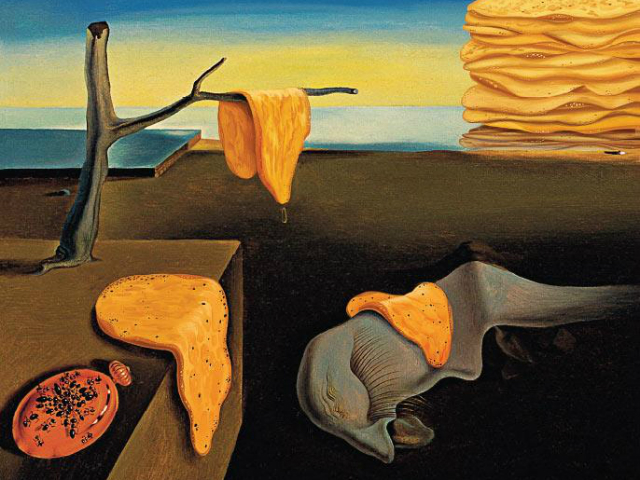
'The Persistence of Pancakes' by Artemy Lebedev Design Studio
It’s a scene familiar to pretty much anyone who has ever shared a meal or a snack with a friend - it could be a bag of junk food, sandwiches, or even fast food rice meals. The moment one of you drops a single potato chip or a piece of bread on the table (or sometimes, even the ground), there’s a very brief pause before the guilty party picks it up, chucks it into their mouth, and casually invokes the short but sweet rule that has been passed on from generation to generation of foodies: “Wala pang five seconds.”
Truth be told, it’s easy to dismiss this ‘insightful’ nugget of wisdom as simply the brainchild of a hungry “armchair scientist” with an overpowering urge to eat every last scrap of food from his plate, regardless of how long the scraps actually managed to stay there.
However, a team of researchers from Aston University’s School of Life and Health Sciences decided to investigate this well-known claim, and discovered that there might just be some truth behind the old saying.
The '5-second rule' does rule, after all
“Consuming food dropped on the floor still carries an infection risk as it very much depends on which bacteria are present on the floor at the time,” clarified Professor Anthony Hilton, who led the team of final year Biology students. However, “the findings of this study will bring some light relief to those who have been employing the five-second rule for years, despite a general consensus that it is purely a myth.”
Monitoring the rate of transfer of the common bacteria Escherichia coli (E. coli) and Staphylococcus aureus from different kinds of floor surfaces (namely carpet, laminate and tiled surfaces) to toast, pasta, biscuit and a sticky sweet during a contact interval of between 3 to 30 seconds, the team had a few amusing observations.
For starters, the duration of time that the food stayed in contact with the floor was proven to be a significant factor in the bacteria’s jump from floor to food. According to the results, bacteria were less likely to transfer from carpeted surfaces, while the smoother laminated or tiled surfaces were more likely to allow bacteria to transfer to moist foods.
Most importantly, these findings held true for food that made contact for longer than 5 seconds.
Not a single drop of food wasted
To further lend credibility to their noble pursuit, the team also conducted a survey to find out just how many people still subscribed to the five-second rule.
They found that 87% of their respondents were either willing to eat food that had already been dropped on the floor, or had already done such a thing in the past. Interestingly, more than half of those people (55%) turned out to be women, 81% of whom actually adhered to the five-second rule.
“Our study showed that a surprisingly large majority of people are happy to consume dropped food, with women the most likely to do so,” said Professor Hilton. “But they are also more likely to follow the 5 second rule, which our research has shown to be much more than an old wives[’] tail [sic].”
It is currently unknown if the researchers actually ate the food they ran tests on after concluding their experiment.
Source gmanetwork.com

0 comments:
Post a Comment